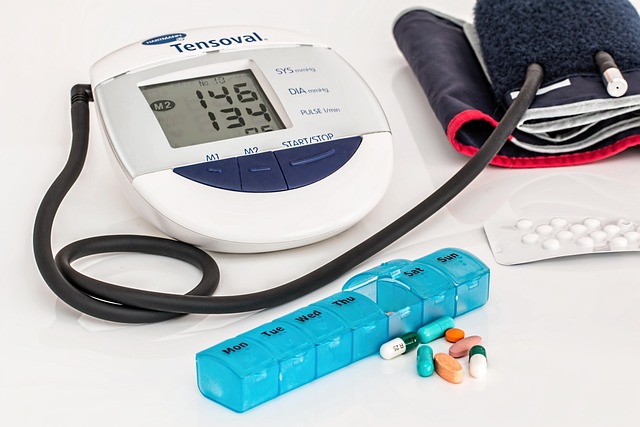Arthritis Treatment and Options: Relieving Pain, Restoring Movement, and Improving Quality of Life
Arthritis is one of the most common joint-related conditions, affecting millions of people worldwide. It involves inflammation of one or more joints, causing symptoms such as pain, stiffness, swelling, and limited mobility. Depending on the type and severity of arthritis, healthcare providers may recommend medications to control symptoms and slow progression.

Arthritis is not a single disease but rather a term encompassing over 100 different conditions that affect the joints and surrounding tissues. The most common forms include osteoarthritis, which results from wear and tear on joints, and rheumatoid arthritis, an autoimmune condition where the body’s immune system attacks joint tissues. Regardless of the type, arthritis can cause chronic pain, inflammation, and limited movement, making everyday tasks challenging. Fortunately, advancements in medical science have led to numerous treatment strategies designed to alleviate discomfort, slow disease progression, and help individuals regain independence.
This article is for informational purposes only and should not be considered medical advice. Please consult a qualified healthcare professional for personalized guidance and treatment.
What Are the Benefits of Arthritis Treatment?
Seeking proper arthritis treatment offers numerous advantages that extend beyond simple pain relief. Effective management can reduce joint inflammation, preventing further damage to cartilage and bone structures. Many patients experience improved mobility and flexibility, allowing them to perform daily activities with greater ease and confidence. Treatment also addresses secondary issues such as muscle weakness and fatigue, which often accompany chronic joint conditions.
Beyond physical improvements, appropriate arthritis care can enhance mental and emotional well-being. Chronic pain frequently leads to depression, anxiety, and social isolation. By controlling symptoms, individuals often report better sleep quality, increased energy levels, and a more positive outlook on life. Early intervention and consistent treatment can slow disease progression, particularly in inflammatory types of arthritis, potentially delaying or preventing the need for surgical procedures. Additionally, comprehensive treatment plans that include education and self-management strategies empower patients to take an active role in their health care.
Understanding Prices and Cost Considerations
The financial aspect of arthritis treatment varies widely depending on the type of care required, geographic location, insurance coverage, and the severity of the condition. Medication costs can range from affordable over-the-counter pain relievers to expensive biologic drugs that may cost thousands of dollars per month without insurance. Physical therapy sessions typically range from $50 to $150 per visit, with many patients requiring multiple sessions weekly. Diagnostic tests, including X-rays and MRI scans, add to the overall expense, with costs varying between $100 and $1,000 depending on the facility and location.
Surgical interventions, such as joint replacement surgery, represent a significant financial commitment, with procedures costing anywhere from $15,000 to $50,000 or more. Alternative treatments like acupuncture, chiropractic care, or massage therapy may cost between $60 and $120 per session. Many patients find that combining conventional and complementary approaches provides the best results, though this increases overall expenses. Insurance coverage plays a crucial role in determining out-of-pocket costs, and patients should thoroughly review their plans to understand deductibles, copayments, and coverage limits.
| Treatment Type | Provider/Option | Cost Estimation |
|---|---|---|
| Over-the-counter NSAIDs | Pharmacy retailers | $10 - $30 per month |
| Prescription medications | Healthcare providers | $50 - $500+ per month |
| Physical therapy | Local clinics | $50 - $150 per session |
| Biologic drugs | Specialty pharmacies | $2,000 - $5,000+ per month |
| Joint replacement surgery | Hospitals and surgical centers | $15,000 - $50,000+ |
| Acupuncture sessions | Licensed practitioners | $60 - $120 per session |
Prices, rates, or cost estimates mentioned in this article are based on the latest available information but may change over time. Independent research is advised before making financial decisions.
Finding Treatment Available in Your Area
Accessing quality arthritis care begins with identifying appropriate healthcare providers and facilities in your local community. Primary care physicians often serve as the first point of contact, providing initial diagnosis and treatment recommendations. For more specialized care, rheumatologists focus specifically on arthritis and autoimmune conditions, offering expertise in complex cases and advanced treatment options. Orthopedic surgeons become necessary when joint damage is severe and surgical intervention may be required.
Physical therapists play a vital role in arthritis management by designing exercise programs that strengthen muscles, improve flexibility, and protect joints from further damage. Many communities also have pain management clinics that offer multidisciplinary approaches combining medication, injections, and alternative therapies. To locate services in your area, start by consulting your insurance provider’s network directory, which lists covered practitioners and facilities. Online healthcare directories and hospital websites provide additional resources for finding qualified specialists. Community health centers often offer affordable care options for those with limited insurance coverage or financial constraints.
Patient support groups and arthritis foundations can provide valuable recommendations based on local experiences and may offer educational programs about managing the condition effectively. Telemedicine has also expanded access to specialist consultations, particularly beneficial for individuals in rural areas or those with mobility limitations.
Comprehensive Treatment Approaches
Successful arthritis management typically involves a combination of strategies tailored to individual circumstances. Pharmacological treatments include nonsteroidal anti-inflammatory drugs (NSAIDs), corticosteroids, disease-modifying antirheumatic drugs (DMARDs), and biologic response modifiers. Each medication class targets different aspects of arthritis, from reducing inflammation to modifying immune system activity.
Non-pharmacological interventions are equally important and include physical therapy, occupational therapy, weight management, and regular exercise. Low-impact activities such as swimming, cycling, and walking help maintain joint function without excessive stress. Assistive devices like braces, canes, and ergonomic tools can reduce joint strain during daily activities. Heat and cold therapy provide temporary relief from pain and stiffness, while dietary modifications, particularly anti-inflammatory diets rich in omega-3 fatty acids, may help reduce symptoms.
For advanced cases where conservative treatments prove insufficient, surgical options such as joint replacement, arthroscopy, or joint fusion may be considered. These procedures aim to restore function, eliminate pain, and improve quality of life when other interventions have been exhausted.
Conclusion
Arthritis treatment has evolved significantly, offering hope and improved outcomes for millions affected by this chronic condition. By understanding the benefits of various treatment modalities, considering cost factors, and accessing local healthcare resources, individuals can develop comprehensive management plans that address their unique needs. While arthritis presents ongoing challenges, the combination of medical advances, lifestyle modifications, and supportive care enables many people to maintain active, fulfilling lives despite their diagnosis. Working closely with healthcare professionals and staying informed about treatment options empowers patients to make decisions that optimize both short-term relief and long-term joint health.




